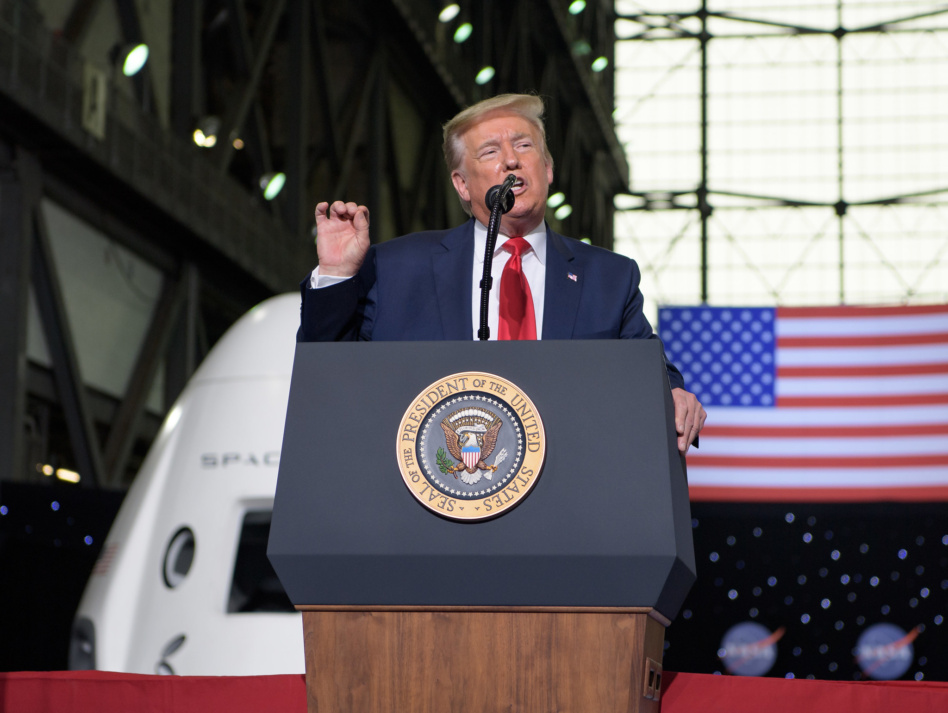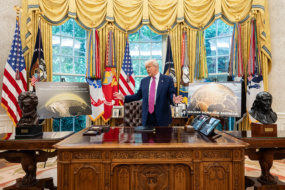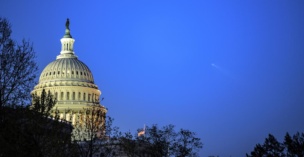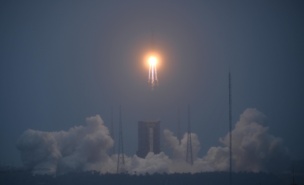Editor’s note: This story originally ran in July when Donald Trump was named the Republican nominee. It has been updated on Nov. 6 to reflect the results of the election.
Former President Donald Trump second term in the White House is likely to be marked by prioritizing on lunar exploration, boosting national security space capabilities, and partnering with commercial companies.
Trump’s accomplishments: The Trump White House left a lasting mark on the space community between 2017 and 2021, including:
- Establishing the Artemis program and codifying America’s plan to return humans to the Moon as a stepping stone to Mars
- Reinstating the National Space Council and allowing the high-profile panel to enact changes through seven Space Policy Directives
- Championing the Space Force, which was officially formed by a bill passed by Congress
An important note: the Biden administration did not make any substantive changes to Trump’s space policy and kept each of these three signature achievements.
The fine print: At the convention in July, the Republican party formally adopted its platform for 2024, which includes a short space portion:
“Under Republican Leadership, the United States will create a robust Manufacturing Industry in Near Earth Orbit, send American Astronauts back to the Moon, and onward to Mars, and enhance partnerships with the rapidly expanding Commercial Space sector to revolutionize our ability to access, live in, and develop assets in Space.”
So, what’s next? It’s unlikely there will be major changes in a potential second Trump term, according to Greg Autry, a professor at ASU who worked on the NASA Agency Review Team when Trump was preparing to take office in 2016 and also served as the White House liaison at NASA.
“Frankly they got it right. I don’t see a need for a major reboot,” Autry told Payload. “It’s clear that things are dynamically different eight years later…but the basic direction of using the Moon to get to Mars, civil, commercial and military space working in concert, and coordinating through the space council are all still there.”
The Trump administration’s top priority, according to Autry, is likely to be “kicking Artemis into high gear” and ensuring Artemis III—the first crewed mission to the lunar surface since Apollo—remains on track to avoid getting beaten by China.
On the campaign trail, Trump has also been vocal about his desire to establish a Space National Guard despite opposition from governors.
Project 2025? The Heritage Foundation drafted a separate potential playbook for the Trump administration, dubbed Project 2025. The incoming president claimed that he “had nothing to do” with the policy outline, casting doubt on how much its contents would influence a potential second term. But it does make several space recommendations, including:
- Elevating the Office of Space Commerce
- Boosting the Space Force’s offensive capabilities
- Reducing overclassification to better partner with commercial actors
- Increasing cooperation with allies on space intelligence
People matter: The people who would serve on Trump’s team—and their level of enthusiasm for space—would also play a big role in how much attention it gets during a possible second term. The vice president is an especially important position for space, since the VP is traditionally the leader of the National Space Council.
Former Vice President Mike Pence, who was not on Trump’s ticket, was a self-proclaimed space fan who enthusiastically led National Space Council meetings, traveled to milestone launches, and traveled to Colorado to speak at the Space Symposium in 2018.
Trump’s vice president, Sen. J.D. Vance (R-OH), who served on the Senate space subcommittee, has made few public comments about space. However, Autry stressed not to count anyone out.
“I don’t think anybody expected Pence to be the strong advocate for space that he was,” Autry said. “He didn’t just show up and attend the meeting, he dug in and he understood the details.”
More reading: Autry recommended two books for those looking to dive deeper into the world of the Trump administration’s space priorities—though neither is endorsed as official policy.
- Red Moon Rising: How America Will Beat China on the Final Frontier is written by Autry and Peter Navarro, who helped craft Trump’s original space policy.
- The New MAGA Deal: The Unofficial Deplorables Guide to Donald Trump’s 2024 Policy Platform, written by Navarro, which includes a space chapter written by Autry.
Update: This story has been corrected to reflect that the Trump administration approved seven space policy directives.




